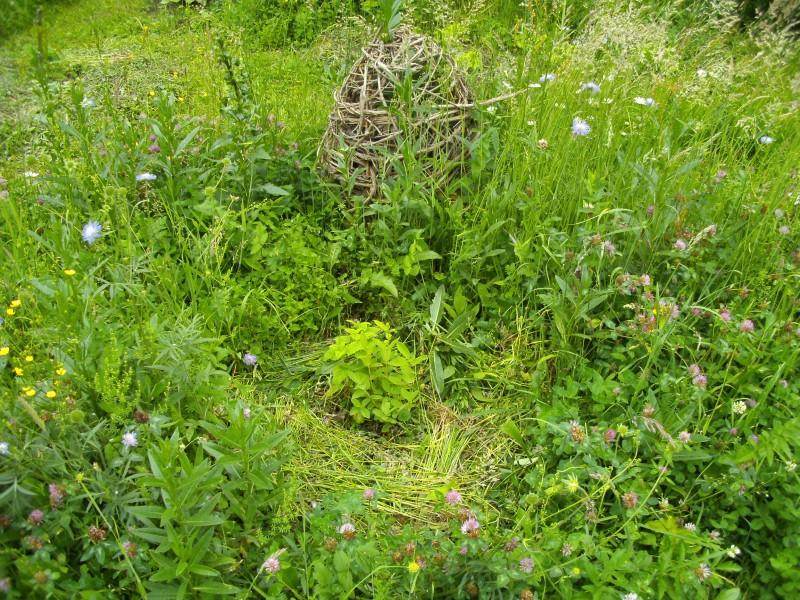




Study nature, love nature, stay close to nature. It will never fail you. --Frank Lloyd Wright





Le blog d'Emma: Homesteading, vintage sewing & knitting, renovating, wildcrafting, etc. in Brittany, France.








Study nature, love nature, stay close to nature. It will never fail you. --Frank Lloyd Wright




Study nature, love nature, stay close to nature. It will never fail you. --Frank Lloyd Wright




Brenda
Bloom where you are planted.
http://restfultrailsfoodforestgarden.blogspot.com/




Study nature, love nature, stay close to nature. It will never fail you. --Frank Lloyd Wright
 1
1










Designer, herbalist, hiker in Hurley, NY, USA. Zone 6. They/them.








 ... and I guess I do like that idea as well, however, If I opt for the hens, I guess that would still require enough time for them to do the scratching-weeding-grubbing-fertilizing before I could plant anyway. That would take the better part of the summer.
... and I guess I do like that idea as well, however, If I opt for the hens, I guess that would still require enough time for them to do the scratching-weeding-grubbing-fertilizing before I could plant anyway. That would take the better part of the summer.
Study nature, love nature, stay close to nature. It will never fail you. --Frank Lloyd Wright




Marvin Warren wrote:Does anyone have any good alternatives to cardboard/newspaper for sheet mulching?




Xisca - pics! Dry subtropical Mediterranean - My project
However loud I tell it, this is never a truth, only my experience...













Study nature, love nature, stay close to nature. It will never fail you. --Frank Lloyd Wright




Marvin Warren wrote:Does anyone have any good alternatives to cardboard/newspaper for sheet mulching?
 It grows well inbetween grass, you just need to leave place alone for one year after seeding so the clover roots itself well. White clover is also good for tossing into grass, lucerne is not so good. Other really good ones for tossing into grass are plants from Apiaceae family, especial wild parsnip and Heracleum sphondylium in my case. Deep tap root, amazing how many insects they atract (yes, it's true!
It grows well inbetween grass, you just need to leave place alone for one year after seeding so the clover roots itself well. White clover is also good for tossing into grass, lucerne is not so good. Other really good ones for tossing into grass are plants from Apiaceae family, especial wild parsnip and Heracleum sphondylium in my case. Deep tap root, amazing how many insects they atract (yes, it's true!  ).
).
R Laurance wrote:Tal, in your second picture it appears that you've got red clover growing as well. Was that part of the beneficial seeds you tossed outside the meter radius you prepped or inside? That appears to be the way that I was imagining it would be if tossing the seed balls actually worked among the grass.




"We're all just walking each other home." -Ram Dass
"Be a lamp, or a lifeboat, or a ladder."-Rumi
"It's all one song!" -Neil Young









Study nature, love nature, stay close to nature. It will never fail you. --Frank Lloyd Wright












Study nature, love nature, stay close to nature. It will never fail you. --Frank Lloyd Wright




Brenda
Bloom where you are planted.
http://restfultrailsfoodforestgarden.blogspot.com/













Study nature, love nature, stay close to nature. It will never fail you. --Frank Lloyd Wright













 .
.




Study nature, love nature, stay close to nature. It will never fail you. --Frank Lloyd Wright




laura sharpe wrote:lovely brown paper can be cheap enough, never thought of it b4, likely make excellent mulch too. put under your wood chips if yu dont have enough
.
what kind of store do yu find it cheapest in?

|
Spare the rod, spoil the child. Here, use this tiny ad named Rod:
12 DVDs bundle
https://permies.com/wiki/269050/DVDs-bundle
|

